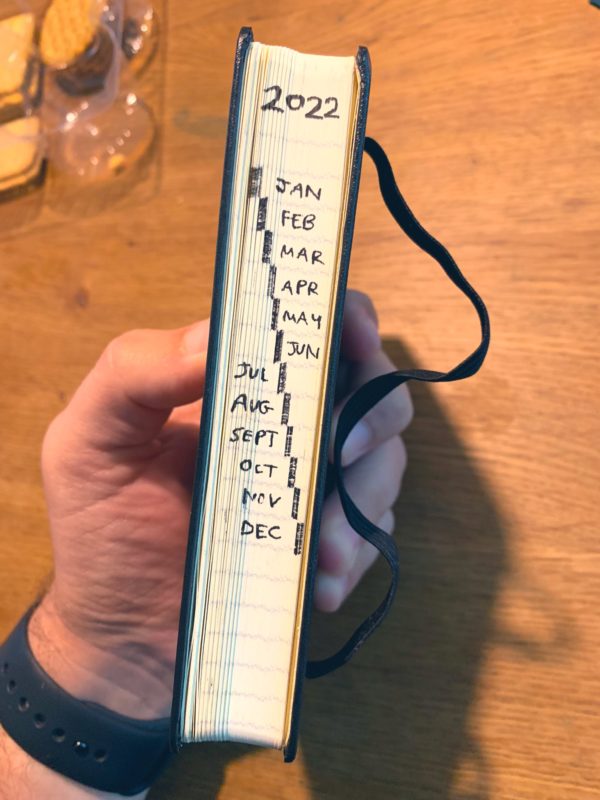
Tuesday’s newsletter was about making indexes on the fore-edge of your books and notebooks. Some truly nerdery, which was fun to write about. Read the letter here.
Fore-edge painting and indexing

The outside edge of a book’s pages opposite of the spine is called the “fore-edge.” Like many things that are neglected or overlooked, it’s a place of great creative potential. Check out this video with fore-edge painter Martin Frost:
I don’t usually do all that much with the fore-edges of my books, except for my notebooks, which I sometimes index by rubbing ink or pencil over the page edges of some sections and labelling them. (See the logbook above.)

Most recently it occurred to me that I could use fore-edge indexing as a way to track the structure of a book. I was reading a book and it was going splendidly and then all the sudden I got bogged down. I suspected it had something to do with pacing and chapter length. So I did a fore-edge index and soon I had visual evidence of my suspicion: swelling chapters broke up the flow. (I could probably find similar evidence based on where I happened to dog-ear a page.)
This might be a good exercise for writers: make a fore-edge index of some of your favorite books, and see how they are structured and paced. For books that alternate narratives or subjects, you can use different colors. (See above.)
Filed under: marginalia

